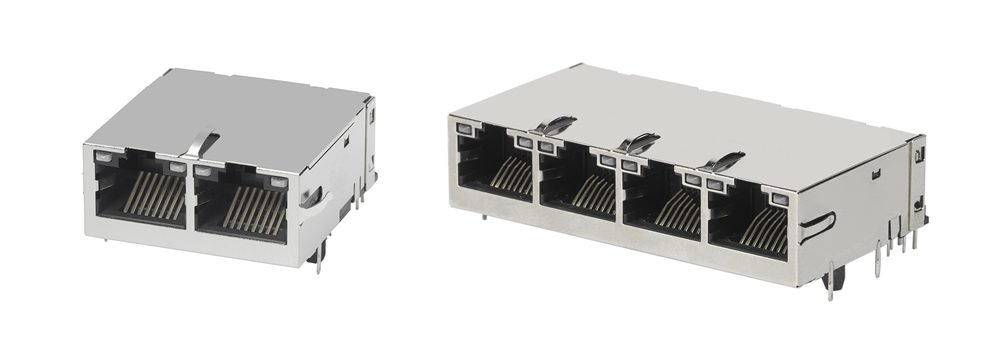ICMs Help Build Powerful 5G Networks
Integrated connector modules (ICMs) are making it possible to build or upgrade networks to support the higher speeds and bandwidths of 5G and the higher volumes of data traffic that are coming with full implementation.
By Bel Magnetic Solutions
As the installation of 5G infrastructure continues to advance, more consumers are gaining access to the high speeds, low latencies, and abundant bandwidth promised with the fifth generation of mobile networks. In addition to improving the consumer experience for activities such as streaming video, the expansion of wireless connectivity opens up vast potential for business, urban infrastructure, and a fully connected society.
Designers are integrating Internet of Things (IoT) technologies into more devices to take advantage of 5G’s ability to facilitate smart homes, smart buildings, and smart cities. This new proliferation of connected devices will continue to drive exponential growth rates of data. Processing and storing the associated huge volumes of data will have a tremendous impact on data center capacity and topology. End users, operators, and suppliers in the 5G ecosystem will depend on connector suppliers to provide the high-quality, reliable, efficient, and powerful components needed to adapt data networks.

Bel Fuse’s 2xN Port MagJack® 10G PoE ICMs are a powerful addition to networking equipment such as switches, routers, and Ethernet controllers.
The exponentially higher speeds and reduced latencies that come with fully implemented 5G networks will enable many applications to offload computation-intensive tasks to data centers, further driving data traffic and demand for cloud computing. At the same time, telecom operators are modifying central offices to add server racks able to sustain computationally intensive tasks. Data center owners and telecom companies need to add more power, cooling, servers, and racks to prepare for the demands of 5G.
With current technology, 2kWh of energy is required to download one gigabyte of data. One major driver for data traffic is video streaming, which is expected to continue to grow. This growth will be reinforced by increasing availability of connectivity services and 5G. Higher port densities, more bandwidth capability, and higher power output per port will be essential to driving the infrastructure of new 5G networks, both inside the closets and outside on the streets. These networks will implement a dense, distributed network of base stations in a small cell infrastructure. This will allow more processing to happen on the edge, leading to lower latencies. Base stations and small cells require power, and ideally this power can be supplied by the switches within the network infrastructure.

Bel’s 1×1 Port MagJack® ICMs are comprised of single port thru 8 port low density RJ45 connectors with integrated Ethernet magnetics inside the package.
Powerful Ethernet Connectivity Remains Relevant
Although the arrival of 5G may raise questions over the future of Ethernet-based architectures, most analysts agree that the technology will continue to play a key role in networks. New and emerging cabling products will continue to support Ethernet’s use into the future as they expand the ability to carry greater signal and power levels. A new generation of Ethernet connector products work with these cables to combine power and data delivery in flexible and cost-effective systems for a broad range of home and enterprise applications, such as access points, surveillance cameras, VoIP phone systems, and LED lighting.

Bel has the broadest portfolio of ICM products available, perfectly suited to meeting the needs of 5G.
The delivery of 5G data will depend heavily on Ethernet technologies at various points in network architectures. With PCB real estate at a premium, integrated connector modules (ICMs) become the perfect partner to 5G, integrating the electrical interfacing circuitry, or magnetics, into the connector. Adding 5G levels of bandwidth to existing forms of connectivity, such as wireless access points and base stations, will make ICMs even more important. It will also inspire an increase in the use of Power over Ethernet (PoE) solutions to help build out and upgrade networks in a minimally invasive way. Access to ICMs offering up to four ports with PoE at 1GBase-T bandwidths will help 5G extend its reach as network operators look to increase capacity quickly.
As systems become smaller and implement faster speeds, Ethernet connectors are becoming faster and smaller. ICM products combine the small form factor necessary to give system designers flexibility with the higher speeds of 5G, providing the ability to put Ethernet ports at critical points throughout network architectures.
Visit Bel online to learn more.





